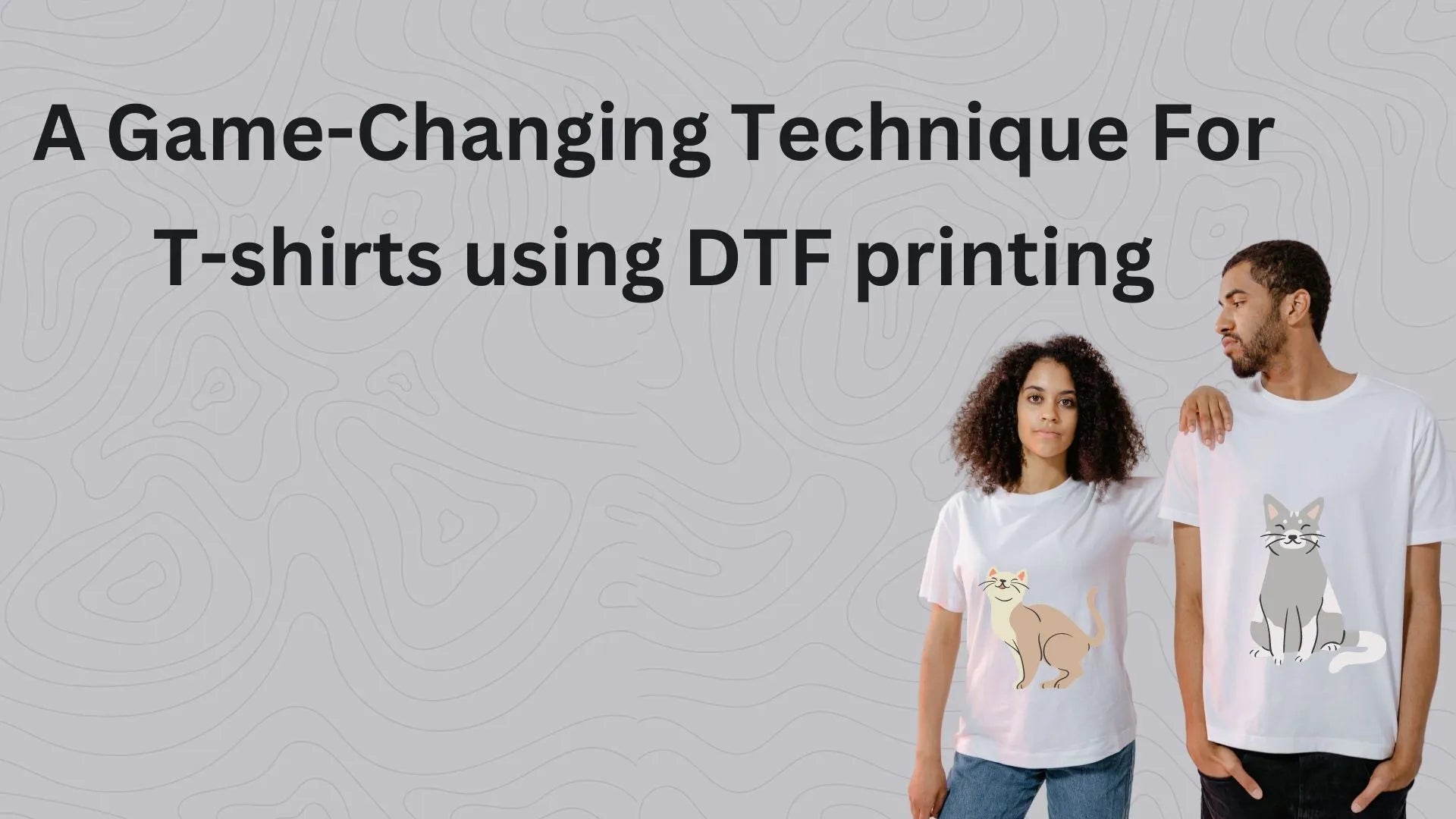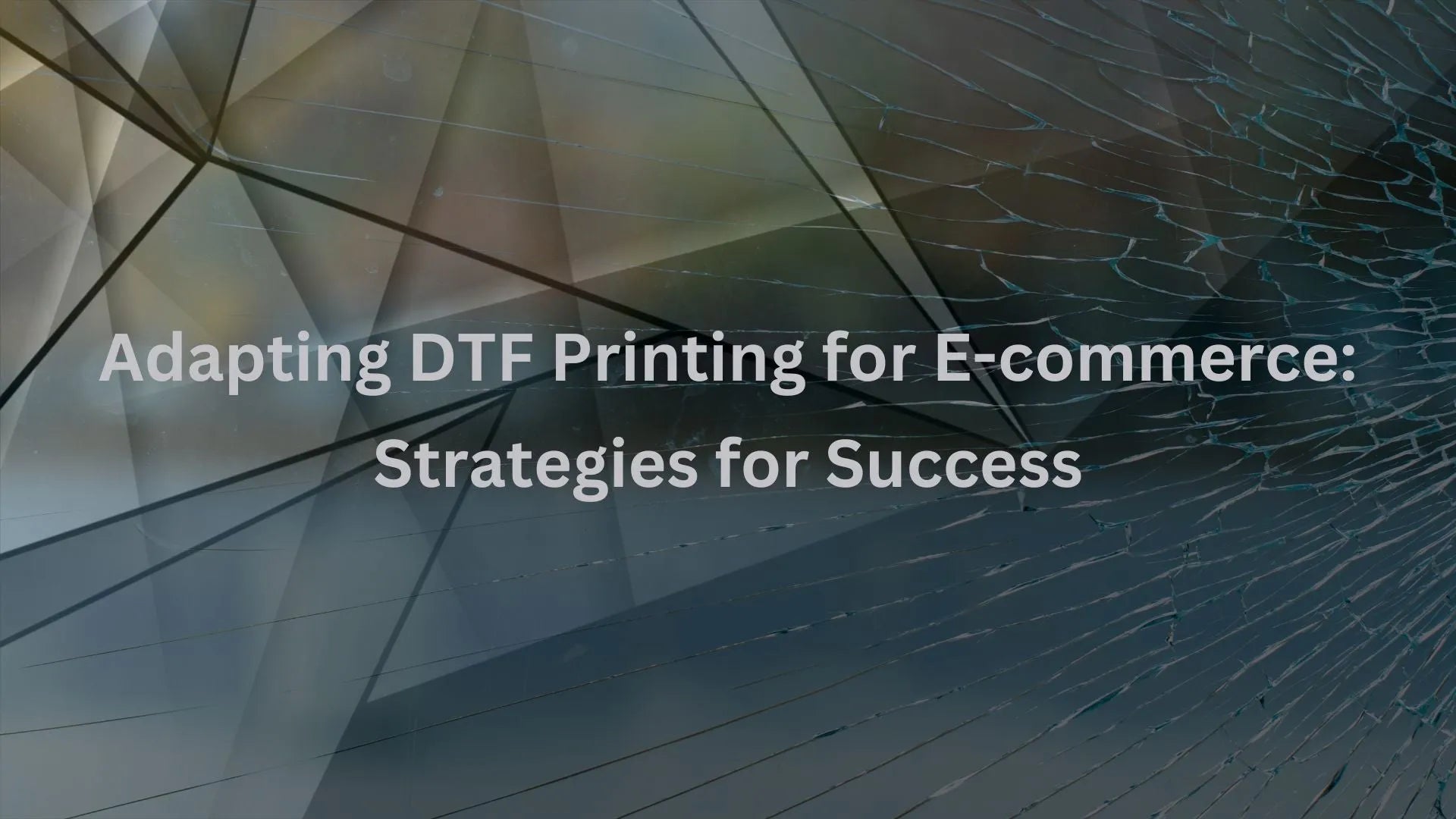
A Game-Changing Technique For T-shirts using DTF printing

A Game-Changing Technique for T-shirts Using DTF Printing
T-shirt printing has evolved from basic screen printing to advanced methods like Direct to Film (DTF) printing. DTF has become a revolutionary technique for creating high-quality, durable prints on T-shirts. Whether you're a hobbyist or a business, DTF printing offers an exciting and cost-effective way to enhance your T-shirt designs. Here's why it's a game-changer:
What is DTF Printing?
DTF printing involves printing a design onto a special film, applying transfer powder, and using a heat press to transfer it onto a T-shirt. Unlike traditional methods, DTF printing delivers full-color, intricate designs on various fabrics, such as cotton and polyester.
Why DTF Printing is a Game-Changer for T-shirt Printing
-
Versatility Across Materials
DTF works on light and dark fabrics, offering flexibility for different design styles. -
Cost-Effective for Small Runs
DTF allows you to print small batches without high upfront costs, perfect for DIY projects or small businesses. -
Vibrant, Durable Prints
DTF prints are long-lasting, resistant to fading and cracking, and feel soft on fabric. -
Fine Detail and Full-Color Printing
DTF excels at printing intricate, detailed designs that would be difficult with screen printing.
How DTF Printing Works for T-shirts
-
Create Your Design
Use software like Adobe Illustrator to create high-resolution designs. -
Print on DTF Film
Print your design in reverse on the special DTF film. -
Apply Transfer Powder
Sprinkle transfer powder onto the printed design and shake off excess. -
Cure the Film
Use a drying oven or heat press to set the powder and ink. -
Heat Press the Design
Heat press the cured film onto the T-shirt. -
Enjoy Your Custom T-shirt
Peel off the film and enjoy a vibrant, soft, long-lasting print.
Tips for Success
- Use high-quality DTF film and ink.
- Test your printer before printing on T-shirts.
- Ensure correct heat press settings.
- Wash inside-out for long-lasting results.
Conclusion
DTF printing provides a cost-effective, versatile, and high-quality solution for custom T-shirt printing. It’s a revolutionary method for hobbyists and businesses alike, offering vibrant, durable prints on a variety of fabrics.
1. What is Direct to Film (DTF) T-shirt printing?
Direct to Film (DTF) T-shirt printing is a method where a design is printed onto a special film, then transferred to a T-shirt using a heat press. It involves printing with DTF ink on film, applying transfer powder to bind the ink, and pressing it onto the fabric for vibrant, durable results.
2. What materials can I print on with DTF printing?
DTF printing works on various materials, including cotton, polyester, and fabric blends. It also works on hard surfaces like wood, ceramics, and plastics, making it a versatile printing method for custom T-shirts, promotional products, and more.
3. How long do DTF prints last on T-shirts?
DTF prints are durable and resistant to fading, cracking, or peeling over time. With proper care, such as washing inside out and avoiding high heat, the prints can last through many washes without losing their vibrancy.
4. Do I need to prepare my T-shirt before using DTF printing?
No, DTF printing does not require pre-treatment of the fabric like other methods (such as screen printing). The transfer process works directly on the fabric without the need for additional steps before printing.
5. Can I print on both light and dark T-shirts with DTF printing?
Yes, DTF printing works well on both light and dark T-shirts. The prints are vibrant and opaque, even on dark fabrics, without the need for white underbase, making it a versatile option for different T-shirt colors.
6. What kind of printer do I need for DTF T-shirt printing?
You need a DTF printer specifically designed for printing on transfer film. Some inkjet printers can be converted to DTF printers with the right setup, or you can purchase a dedicated DTF printer that handles the special inks and film used for this process.
7. Is DTF printing more cost-effective than screen printing for small runs?
Yes, DTF printing is generally more cost-effective for small runs compared to screen printing. DTF does not require setup costs for each color, making it ideal for producing custom T-shirts in small quantities or for personal projects.
8. What kind of ink is used for DTF printing?
DTF printing uses water-based pigment inks that are specifically designed for high-quality prints on film. These inks provide vibrant colors and long-lasting durability, ensuring that the designs remain sharp and vibrant on T-shirts.
9. Do I need special software to design T-shirt prints for DTF printing?
Yes, you need graphic design software like Adobe Illustrator, Photoshop, or other compatible programs to create or modify your designs. The design must be in high resolution (300 DPI) for the best print quality, and it should be mirrored for printing on dark fabrics.
10. What are the benefits of using DTF printing for T-shirts over other methods?
DTF printing offers several advantages:
- Versatility: It works on both light and dark fabrics without the need for an underbase.
- Cost-effective for small runs: No setup fees for each design, making it ideal for small batches.
- Durability: The prints are long-lasting and resistant to fading or cracking.
- Full-color and detailed designs: DTF allows for intricate designs, including fine details and photo-quality images, on various fabrics.


Leave a comment
This site is protected by hCaptcha and the hCaptcha Privacy Policy and Terms of Service apply.